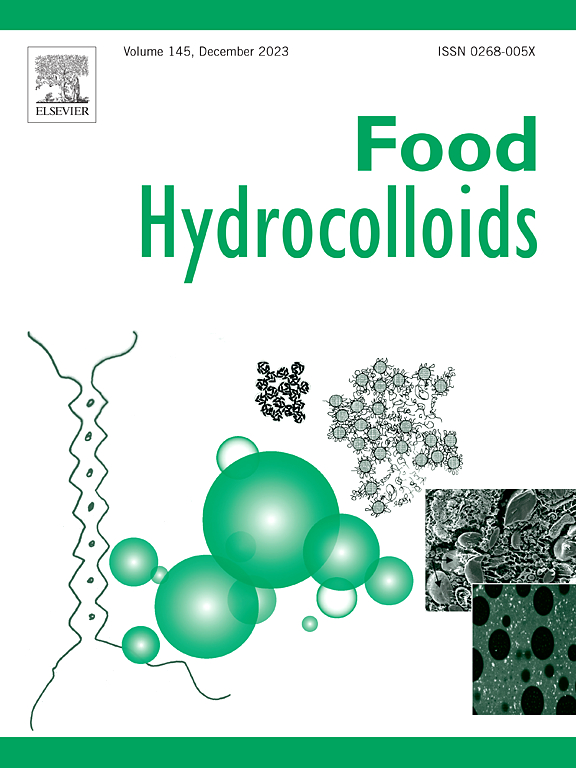Enhancing protein interactions in Zein-β-lactoglobulin complexes by (-)-Epigallocatechin-3-gallate: Expanding the potential of molecular glues in food application
IF 11
1区 农林科学
Q1 CHEMISTRY, APPLIED
引用次数: 0
Abstract
Enhancing protein-protein interactions (PPIs) has been intensively studied, and the use of molecular glues is a cutting-edge technology. Although the number of molecular glues approved by the Food and Drug Administration is limited, (−)-Epigallocatechin-3-gallate (EGCG) has shown potential as a molecular glue. This study aimed to investigate how EGCG regulated the mechanism of PPIs using zein and β-lactoglobulin (β-LG) as model proteins. The molecular dynamics simulations revealed that EGCG enhanced hydrogen bonding and hydrophobic interactions in Zein-β-LG complexes, thereby improving their stability and compactness. The ΔG values for the formation of the complexes were all higher than −20 kcal/mol, suggesting strong protein interactions and spontaneous binding process. To validate the theoretical calculations, experimental verification was also conducted. The turbidity, particle size, and ζ-potential results demonstrated that EGCG enhanced the aggregation and stability of Zein-β-LG complexes. Fluorescence experiments indicated that the ΔG values at 298K were −27.57 kJ‧mol−1 at pH 5.5, −26.26 kJ‧mol−1 at pH 7.0, and −25.58 kJ‧mol−1 at pH 2.5, and the corresponding binding sites were 1.036, 1.018, and 1.118, respectively. Thermodynamic parameters suggested that hydrogen bonding and hydrophobic interactions were the main driving forces involved in the complexation of EGCG and Zein-β-LG. EGCG binding significantly altered the secondary structures and surface properties of the complexes. These insights emphasized the potential of EGCG in modulating protein interactions, with significant implications for protein-based material and delivery system in the food and pharmaceutical industries.

求助全文
约1分钟内获得全文
求助全文
来源期刊

Food Hydrocolloids
工程技术-食品科技
CiteScore
19.90
自引率
14.00%
发文量
871
审稿时长
37 days
期刊介绍:
Food Hydrocolloids publishes original and innovative research focused on the characterization, functional properties, and applications of hydrocolloid materials used in food products. These hydrocolloids, defined as polysaccharides and proteins of commercial importance, are added to control aspects such as texture, stability, rheology, and sensory properties. The research's primary emphasis should be on the hydrocolloids themselves, with thorough descriptions of their source, nature, and physicochemical characteristics. Manuscripts are expected to clearly outline specific aims and objectives, include a fundamental discussion of research findings at the molecular level, and address the significance of the results. Studies on hydrocolloids in complex formulations should concentrate on their overall properties and mechanisms of action, while simple formulation development studies may not be considered for publication.
The main areas of interest are:
-Chemical and physicochemical characterisation
Thermal properties including glass transitions and conformational changes-
Rheological properties including viscosity, viscoelastic properties and gelation behaviour-
The influence on organoleptic properties-
Interfacial properties including stabilisation of dispersions, emulsions and foams-
Film forming properties with application to edible films and active packaging-
Encapsulation and controlled release of active compounds-
The influence on health including their role as dietary fibre-
Manipulation of hydrocolloid structure and functionality through chemical, biochemical and physical processes-
New hydrocolloids and hydrocolloid sources of commercial potential.
The Journal also publishes Review articles that provide an overview of the latest developments in topics of specific interest to researchers in this field of activity.
 求助内容:
求助内容: 应助结果提醒方式:
应助结果提醒方式:


